Laboratory mixers are used in a wide variety of laboratory applications. In the cosmetics industry, their versatility is an asset to meet the multiple needs of manufacturers. They are used to conduct Research & Development work, to test innovations, to optimize processes or to perform quality tests while meeting time, volume and performance criteria. Formulation, a key step in new product development, takes place on a laboratory scale and will determine the characteristics of the final product (texture, efficacy, smell, appearance) along with its compliance with regulatory requirements. Choosing the right equipment is therefore critical to succeed in all your operations.
What is a laboratory mixer?

A laboratory mixer is a piece of equipment used to mix different ingredients to make the final product on a benchtop scale. It is most often used to mix liquids with powders to obtain a uniform and homogeneous mixture at a desired scale.
What types of benchtop mixers should be used for cosmetic applications?
There are several types of laboratory mixers. Some of these mixers are specifically designed to meet the needs of the pharmaceutical industry, which requires particular mixing operations, especially in molecular biology. The most common mixers are:
- Rocker mixers offering very low and controlled agitation.
- Vortex mixers used to mix small samples, usually in test tubes, mainly in analytical or biochemical laboratories.
Others, such as magnetic mixers, can be used in the pharmaceutical and chemical industry and for some cosmetic applications. To agitate the solution, they use a magnetic rod placed in the mixture and driven by a magnetic disk. This type of mixing equipment, however, is better suited for small volumes, thin mixtures, and low viscosity liquids.
Finally, mechanical mixers are suitable for different volumes and viscosity levels, making them ideal for the cosmetics industry. They have a tool that can penetrate the mixture and mechanically agitate it. These agitators are appropriate for all types of mixing operations, including dissolving, diluting, homogenizing, dispersing, and keeping in suspension.
Benefits of benchtop-mixers
There are several advantages to using a benchtop mixer.
- Convenience: Laboratory mixers are much more compact than industrial mixers. It is also considerably simpler to manage every aspect of mixing processes, including ingredient dosing, heating, or cooling, and cleaning.
- Versatility: Benchtop mixers are extremely versatile thanks to their variety of tools which allow to produce a wide range of products with a single piece of equipment.
- Improved resource management: Pigments, fragrances, active substances…raw materials can be expensive. Small-scale testing reduces the amount of materials used, the amount of waste generated and therefore the costs associated with product development.
- Time saving: Process parameters can be quickly adjusted during a trial. The laboratory scale also allows laboratory technicians to test and validate the choice of raw materials. It is also possible to test several tools on the same formula, which brings great flexibility to the formulation process and saves time.
- Repeatability and Scalability: Laboratory test results are obtained more quickly and can be analyzed to validate the final product properties. Laboratory scale mixing is an efficient method to validate the parameters that will be implemented at the industrial level. Industrial scale-up is also easier when the laboratory ranges take into account the process parameters important for scale-up.

Laboratory mixer: what to consider when buying your equipment
Factor n°1: Design and product volume
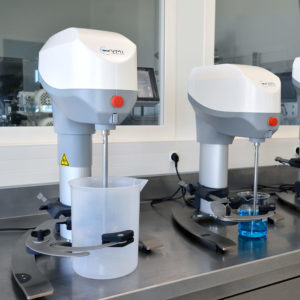
The compact size of laboratory mixers is frequently one of its main advantages: they fit easily into a lab setting. As a result, not only should you consider the amount of space available, but also the number of mixers you want to use. Their placement on a bench enables you to use several mixers to run multiple tests at once.
The size of the mixtures you will make is another factor to consider when selecting a mixer. Different applications require different volumes, and some mixers accommodate this need by offering a large capacity range from a few milliliters to several liters. However, keep in mind that capacity will impact both the sort of tool you require for your applications and the rotational speed.
Finally, the type of beaker and accessories you are working with will also impact the mixer design: lift table, water bath, hot plate… You need to make sure that these accessories can slide easily into the mixing area.
.
Factor n°2: Mixing tools
To make your choice, you must also take into account the mixing processes that you will use, depending on the final product to be made:
- Emulsions: creams, moisturizing milks, body balms, make-up removers, mascara…
- Suspensions : nail polish, foundation, lipstick, scrubs, mascara…
- Gels: shampoos, shower gels, liquid soaps, cleansing gels…
- Solutions : Eau de toilette, perfume, lotions, body / sun oils
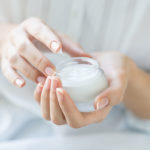

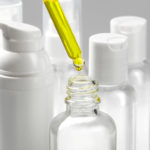

Selecting the proper mixing tool is crucial to ensure the success of the product. This choice is based on several factors:
- The type of flow to be used is a compromise between the type of flow (axial, radial, turbulent, …) and the mechanical effects to be generated (circulation, shear…)
- Results of laboratory tests, leading to modify the tool chosen to obtain the desired result
- Financial criteria, which represent for example a compromise between tool efficiency and installed power
- Functional criteria, such as the tool’s cleanability.
Therefore, it is crucial to select effective tools to guarantee the mixture’s quality. During your trials, a mixer with a range of efficient, simple-to-install tools will be a valuable asset.
Factor n°3: Process and mixing speed
Mastering the mixing process allows to optimize the laboratory scale formulation and help anticipate the large-scale development process. The two factors to control on a benchtop mixer are time and mixing speed, which also depend on the type of tool used and the product made. Typically, speeds are expressed in rotations per minute (rpm) and many mixers offer variable speed. The tool type and diameter must also be considered while choosing a speed. Radial flow tools can typically be employed at high speeds. Speed will be crucial in shearing operations and has an impact on mixing performance and efficiency.
Factor n°4: Ergonomics and safety
Ergonomics are also important when selecting your new mixer.
Laboratory technicians may have to use this type of equipment heavily when performing tests. Good ergonomics is essential to make their daily work easier and avoid musculoskeletal disorders. In addition to ergonomic design, safety is also important. A well designed mixer helps limit gestures that can potentially endanger staff and contributes to a safe working environment.
Other key ergonomic issues include:
- Beaker clamping mechanism: Adaptability and simplicity are key so that installing containers, no matter their size and characteristics, is simple and secure.
- Lifting the mixer’s head: It might be done repeatedly throughout a trial. Therefore, it must be performed smoothly. Electric lifting systems are available on several mixers to make this action easier. If the device has a screen, pressing the screen’s associated button will lift or lower the head. Other mixers have mechanical buttons. In that case, the button needs to be placed in a secure and easily reachable area.
- Test programming: Some mixers with screens allow you to program entire formulas, including the number of phases, speed, duration, and operator call. This is the best way to repeat testing while changing the parameters without handling the mixer.
- Safety systems: It is crucial for all users to be aware of the safety measures associated with the use of this kind of equipment. Moreover, accidents can be prevented with the implementation of safety mechanisms, such as the automated stopping of the tool’s rotation in the absence of a container.
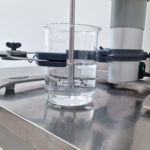
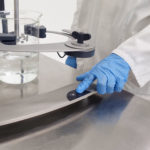
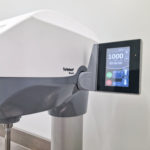
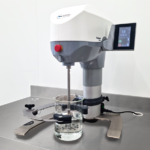
In addition, it is also recommended to check that the equipment manufacturer provides best user practices , a complete instruction manual and indicates the required PPE..
Factor n°5: Follow-up and traceability
If you conduct laboratory testing, you probably want to be able to track, compare and analyze your results. It can be a lot easier with the latest mixers. They allow you to monitor the tests being carried out on the screen, with data and curves displayed. The analysis can be carried on a PC if the mixer is equipped with a data export system.
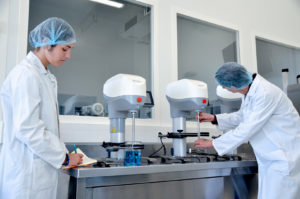
To ensure the quality of the product and its reproducibility on a larger scale, laboratory testing requires the ability to conduct multiple tests, modify the parameters, and monitor the outcomes effectively. The bench-top mixer you choose will enable you to establish the ideal circumstances to obtain a stable end product that possesses the required properties and complies with your requirements. Prior to making a purchase, it is critical to determine your needs in order to select the best mixer option for you.
